- Joined
- Oct 9, 2007
- Messages
- 47,878 (7.38/day)
- Location
- Dublin, Ireland
| System Name | RBMK-1000 |
|---|---|
| Processor | AMD Ryzen 7 5700G |
| Motherboard | Gigabyte B550 AORUS Elite V2 |
| Cooling | DeepCool Gammax L240 V2 |
| Memory | 2x 16GB DDR4-3200 |
| Video Card(s) | Galax RTX 4070 Ti EX |
| Storage | Samsung 990 1TB |
| Display(s) | BenQ 1440p 60 Hz 27-inch |
| Case | Corsair Carbide 100R |
| Audio Device(s) | ASUS SupremeFX S1220A |
| Power Supply | Cooler Master MWE Gold 650W |
| Mouse | ASUS ROG Strix Impact |
| Keyboard | Gamdias Hermes E2 |
| Software | Windows 11 Pro |
ChipHell carried out the first comprehensive evaluation of the Intel Bloomfield 2.66 GHz processor, a derivative of the eagerly anticipated Nehalem architecture, which already has fan-sites mushrooming all over the internet.
The most prominant benchmarks used by enthusiasts and overclockers, 3DMark Vantage (CPU Tests), Super Pi 1M, Cinebench and SANDRA were run on this processor.
In the 3DMark Vantage test, the processor secured a CPU score of 16294. It crunched Super Pi 1M in 15.475 seconds. With the Cinebench, it secured 3048 with a single thread, the multi-threaded bench belted out 12627 CB-CPU hinting at the processor's high multi-core efficiency. And finally, Bloomfield takes SANDRA out on a date. You have to look at the red dot compared to a QX9770 yourself.
I'm appetised and looking forward to a great processor architecture and so could you.
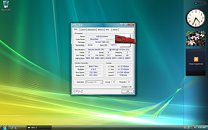
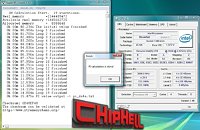
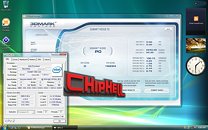
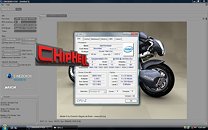
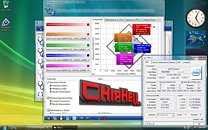
View at TechPowerUp Main Site
The most prominant benchmarks used by enthusiasts and overclockers, 3DMark Vantage (CPU Tests), Super Pi 1M, Cinebench and SANDRA were run on this processor.
In the 3DMark Vantage test, the processor secured a CPU score of 16294. It crunched Super Pi 1M in 15.475 seconds. With the Cinebench, it secured 3048 with a single thread, the multi-threaded bench belted out 12627 CB-CPU hinting at the processor's high multi-core efficiency. And finally, Bloomfield takes SANDRA out on a date. You have to look at the red dot compared to a QX9770 yourself.
I'm appetised and looking forward to a great processor architecture and so could you.





View at TechPowerUp Main Site
Last edited:






 thats almost two more damn cores.
thats almost two more damn cores.
